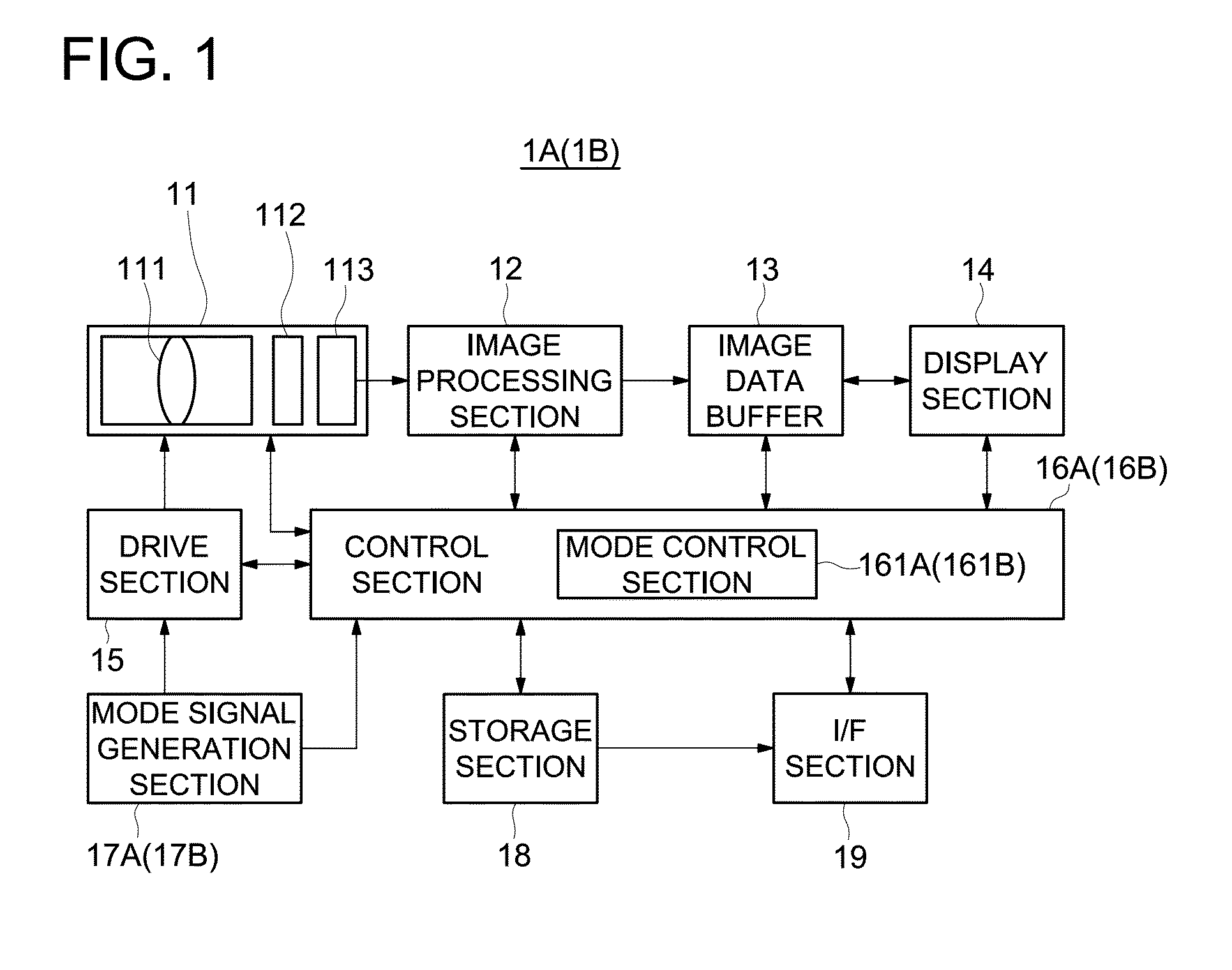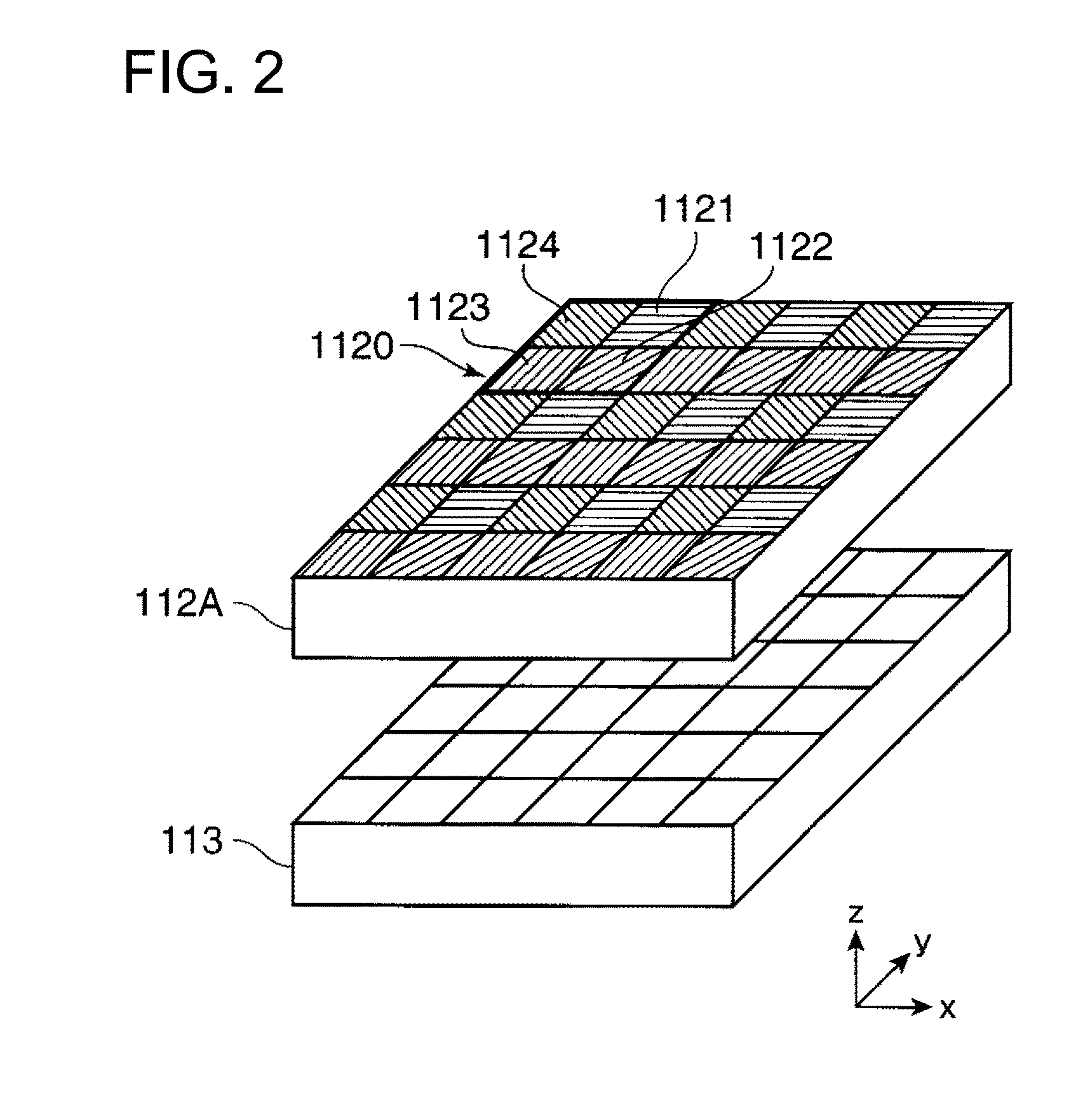Imaging device
a technology of an image and a lens, applied in the field of image imaging devices, can solve the problems of stray light, loss of information of an image which is desired to be formed, loss of normal image information, etc., and achieve the effect of reducing stray ligh
- Summary
- Abstract
- Description
- Claims
- Application Information
AI Technical Summary
Benefits of technology
Problems solved by technology
Method used
Image
Examples
first embodiment
[0100]FIG. 1 is a block diagram showing a constitution of an imaging device of the embodiment. FIG. 2 is a view showing the constitution of a polarization imaging system. And, FIGS. 3A and 3B are views illustrating the intensity fm(i,j) of transmitted light received by the polarization imaging device.
[0101]In FIG. 1, an imaging device 1A is constituted by an imaging section 11, an image processing section 12, an image data buffer 13, a display section 14, a drive section 15, a control section 16A, a mode signal generation section 17A, a storage section 18, and an interface section (I / F section) 19.
[0102]The imaging device 1A includes, for example, a car-mounted camera mounted in a moving body, a surveillance camera for surveillance, and a measurement camera for measurement. Such a monitoring camera is for monitoring the surrounding environment. From the viewpoint of the ability to monitor a wider area, the viewing angle of the imaging optical system 111 is desired to be relatively l...
second embodiment
[0136]In the first embodiment, the mode signal generation section 17A was constituted by an optical sensor. In a second embodiment, a mode signal generation section 17B is constituted by a clock section to tell time. Therefore, the imaging device 1B of the second embodiment is the same as the imaging device 1A of the first embodiment except that a mode signal generation section 17B and the mode control section 161B of a control section 16B are provided, instead of the mode signal generation section 17A and the mode control section 161A of the control section 16A in the imaging device 1A of the first embodiment, respectively. Therefore, description is omitted except for the difference.
[0137]The mode signal generation section 17B constituted by a clock section outputs a current time to the control section 16B as a mode signal in response to a control signal output from the control section 16B. Herein, the mode signal generation section 17B of the clock section may functionally be cons...
third embodiment
[0142]FIG. 4 is a block diagram showing the constitution of an imaging device in a third embodiment. In the first embodiment, the mode signal generation section 17A was constituted by an optical sensor. However, in the third embodiment, the imaging element 113 of an imaging section 11 is also used as a mode signal generation section. Thus, as shown in FIG. 4, the imaging device 1C of the third embodiment is constituted by an imaging section 11 functioning also as the mode signal generation section, an image processing section 12, an image data buffer 13, a display section 14, a drive section 15, a control section 16C, a storage section 18, and an If section 19. A separate constituent member, as shown in the imaging devices 1A and 1B of the first and second embodiments, functioning as the mode signal generation section is not provided. The imaging section 11, the image processing section 12, the image data buffer 13, the display section 14, the drive section 15, the storage section 1...
PUM
 Login to View More
Login to View More Abstract
Description
Claims
Application Information
 Login to View More
Login to View More - R&D
- Intellectual Property
- Life Sciences
- Materials
- Tech Scout
- Unparalleled Data Quality
- Higher Quality Content
- 60% Fewer Hallucinations
Browse by: Latest US Patents, China's latest patents, Technical Efficacy Thesaurus, Application Domain, Technology Topic, Popular Technical Reports.
© 2025 PatSnap. All rights reserved.Legal|Privacy policy|Modern Slavery Act Transparency Statement|Sitemap|About US| Contact US: help@patsnap.com



